Inside the frenzy for flat track motorcycling
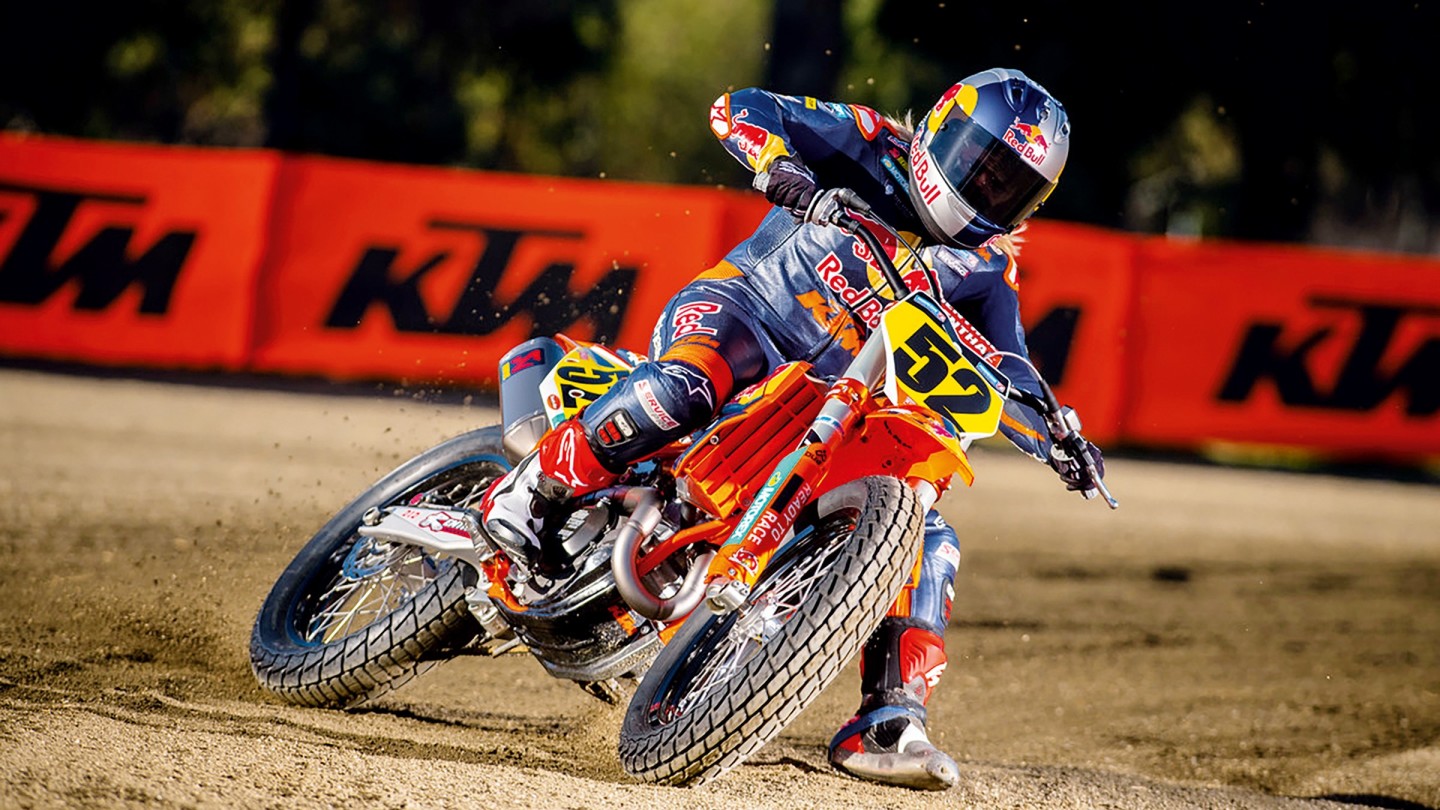
Roula Khalaf, Editor of the FT, selects her favourite stories in this weekly newsletter.
My parents separated when I was only one year old. When I spent time with my mother’s family I would play soccer and go hunting with my uncles; when I was with my dad I would be at his Harley-Davidson dealership where I began riding around on mini motorcycles at the age of three.” Now 29, Shayna Texter-Bauman is a major player in one of the most macho forms of motorcycle racing: flat track. A tiny figure, she measures only 5ft tall but has nonetheless clocked up more wins in her class than any other rider in the sport.
Her success has brought her a huge fan base in America, where the sport originated in the early 20th century, and has been instrumental in encouraging its renaissance on the global stage. Like speedway, flat track racing sees competitors hurling themselves around a simple oval dirt track, but faster – speedway bikes will typically hit 70mph; a flat track bike, 140mph – and it’s commensurately more dangerous. And there’s money in it – American Flat Track (AFT) riders can earn between $5,000-$10,000 for a win. Texter-Bauman’s diminutive stature arguably stands to her advantage as she jostles on the straights at three-figure speeds before sliding her Red Bull-backed KTM into corners at 70, 80, even 90mph during each action-packed lap.
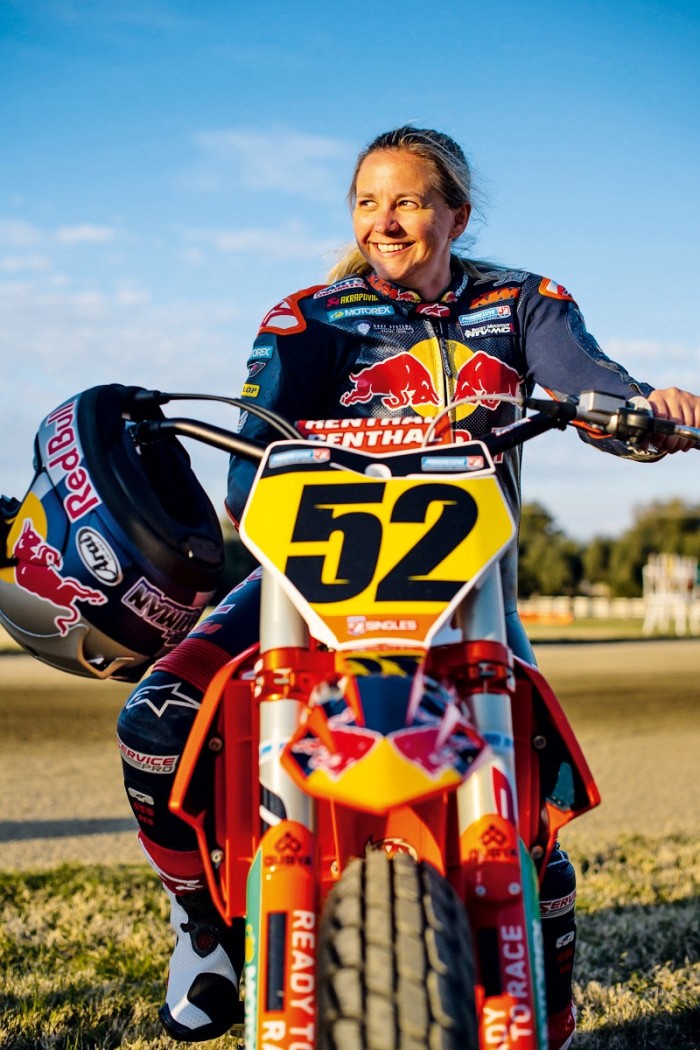
Flat track has its roots in the American board track competitions that developed in the 1910s and ’20s, in which motorcycles would hare around banked ovals built from wooden planking. Potentially lethal for both riders and the crowds who turned out to watch – machines would frequently fly off and maim spectators – the sport shifted to permanent dirt ovals, with the American Motorcyclist Association sanctioning the first flat track championship in 1932. The Harley-Davidson and Indian marques dominated for the first 25 years, but soon British makers such as Triumph and BSA entered the fray, followed in the 1970s by the Japanese, notably Yamaha and Honda, whose arrival provided fresh excitement and established flat track as a road race training ground. Interest waned until the 2014 revival of a Spanish invitational contest called Superprestigio, in which celebrity riders from other motorcycling disciplines are pitted against flat track stars. It provided a much-needed fillip that brought a new following in Europe, led to races being live-streamed by America’s NBC and drew sponsorship from major brands.
Gary Birtwistle, UK and European flat track champion, holds “Slide Schools” (dirtcraft.co.uk) in partnership with sponsor Royal Enfield in a bid to demonstrate that amateur flat track is something on which anyone who can ride a motorcycle can easily get hooked. Would-be racers with £160 to spend can try the sport at venues in Kent, Teesside, Devon and Lincolnshire. And, after only a few hours of sliding incompetently around North Lincolnshire’s Greenfield Dirt Track, I’m now all but flat track obsessed.
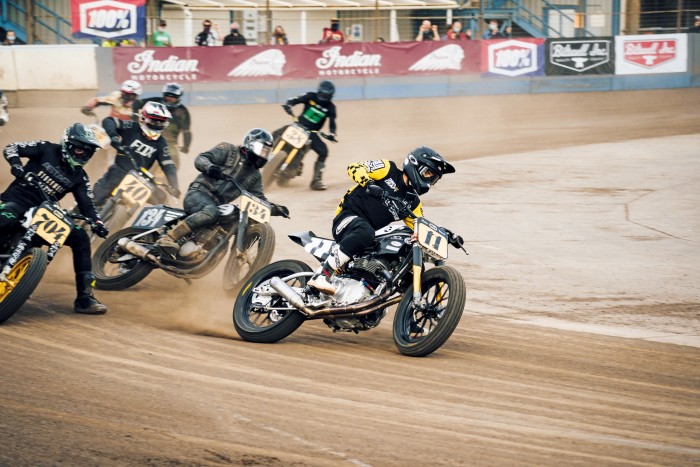
“It’s simple enough to ride around a dirt oval – but to do it fast is an entirely different matter,” says Birtwistle. “Flat track uses a combination of techniques that simply aren’t found in other types of motorcycle racing. We wear a metal overshoe on the left boot for sliding the bike through the corners, which are taken in what’s known as a diamond approach – instead of clipping the apex as a road racer would do, we divide each curve into two and go in high to make the most of the available space and to keep the speed up as much as possible.”
It’s a method I find totally alien at first, but it soon makes perfect sense – along with the counterintuitive need to hang off the seat on the high side when cornering while pushing the bike hard towards the ground, trying to maintain a ramrod-straight back and remembering that on a flat track bike there isn’t a front brake.
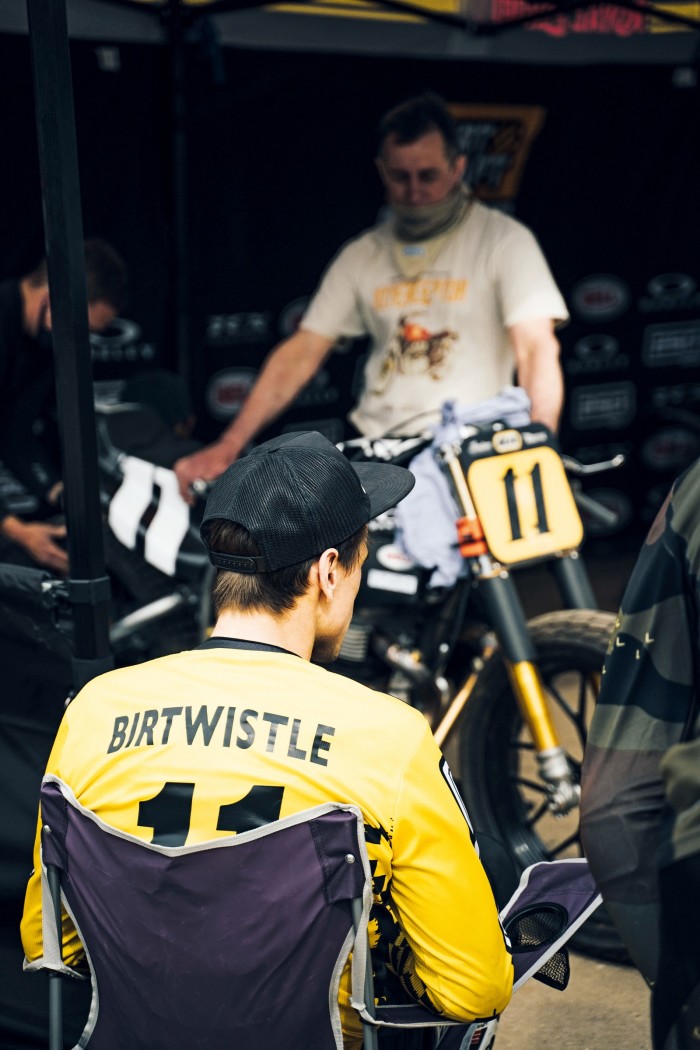
The experience serves to reinforce the already considerable respect I have for Texter-Bauman. She is one of only a handful of women to have been drawn to the AFT league, but her lineage suggests it was inevitable she should become a racer. Her maternal grandfather was a leading sprint car driver, her late father was a professional flat track rider and her Yamaha-riding brother Cory won the AFT Production Twins championship in 2019 and came second last year.
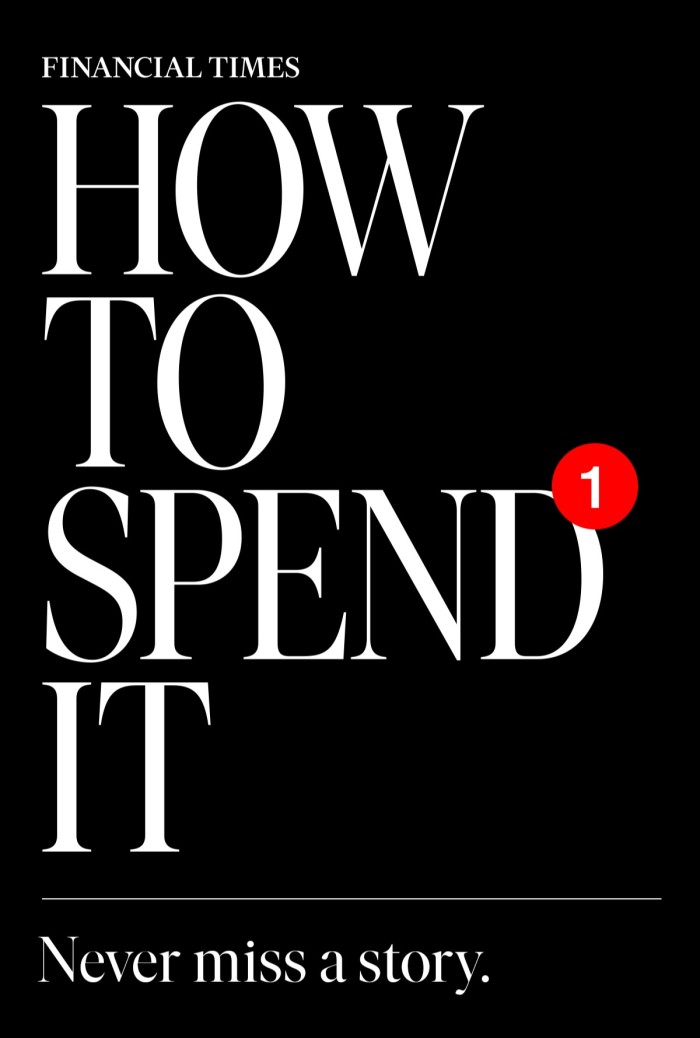
Sign up for our newsletter and get the best of the magazine straight into your inbox.
Growing up with close links to the motorcycle world created a conduit to racing for Texter-Bauman and her brother – but their father’s death in 2010 meant they had to go it alone. “We had to hitch rides to get to the tracks, splitting the gas money and often sleeping in the van,” she recalls. “I don’t really think about the fact that I’m a woman in a man’s world when I’m racing, and I don’t think my competitors do – they simply see me as another racer.”
Flat track is incredibly dangerous. The 2013 Grand National champion Brad “The Bullet” Baker was left partially paralysed after breaking his back in a serious racing accident three years ago. While he can no longer ride competitively, Baker now works as an NBC commentator and as coach to Briar Bauman – an AFT professional motorcycle racer and Texter-Bauman’s husband – and his brother, Bronson. “Despite what happened, I will always love flat track and I’m grateful that I can still use my experience to coach other riders and to promote the sport, which has really come back into the public eye,” he says.
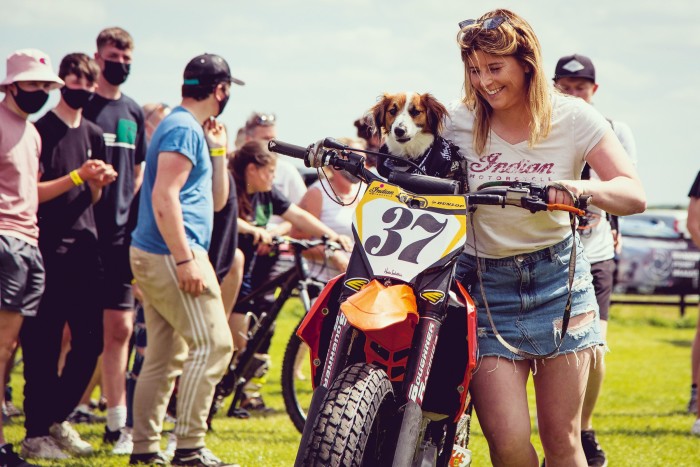
While there are around 700 dirt oval tracks in the US, there are still a mere handful in Britain, where most races are held on speedway and horse-trotting tracks. But a new generation of racers could be about to change that, led by competitors such as 23-year-old Leah Tokelove, who has been wowing the crowds as a Pro Class privateer on a KTM and as a sponsored Super Hooligan rider for Indian Motorcycle. “I was raised in rural Lincolnshire where there wasn’t much to do, so my father bought me a motorcycle and took me sand racing at Mablethorpe Beach when I was 13,” says Tokelove. “It was there that I heard about flat track – and I’ve been racing it ever since.
“The trend for customised track-styled road bikes has also helped raise awareness, and the sponsorship of events by Indian has encouraged other brand names to get involved too. There’s a very strong belief that it’s seriously taking off.”
Comments